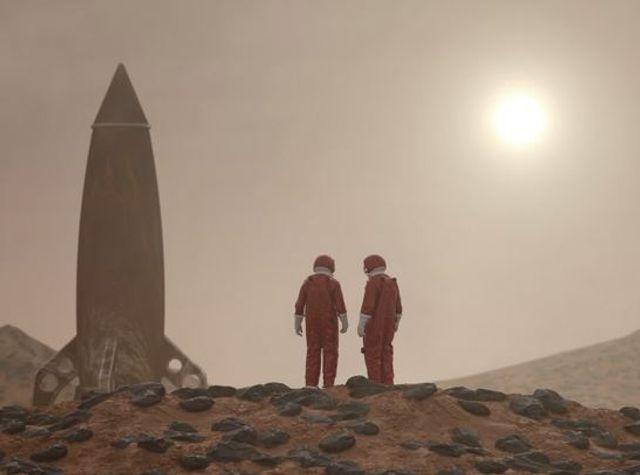
Could future mining jobs be in space instead of on Earth? One analyst says it’s possible—and it might happen sooner than you think.
What can humanity do once we’ve depleted all the Earth’s mineral resources? Turn to space, of course.
So could your mining career see you following in the footsteps of Jeff Bezos, Richard Branson, Elon Musk and William Shatner, and jetting off into space? It might seem unlikely, but experts suggest that could be exactly what the mining jobs of the future entail.
According to a new report from analysts at management and technology consultancy Guidehouse Insights, “mining various resources beyond Earth is rapidly approaching both technological and economic viability”.
“Electric vehicles, utility-scale electric production and storage, and the Internet of Things (appliance connectivity) are driving growth in the demand for rare-earth elements,” the report says.
Rare on earth, not-so-rare in space
Where can we find these elements in abundance? On asteroids, the moon, and other nearby celestial bodies. Analysis published in The Planetary Science Journal found two nearby asteroids could contain iron, nickel, cobalt and precious metals worth a combined total of more than A$15.7 trillion.
And while it might sound like science fiction, humans are about to make contact with these celestial bodies. In 2022 NASA will visit an asteroid called 16 Psyche, which scientists estimate has a mineral value worth A$13,700 quadrillion. (Which in anyone’s book sounds like a made-up number, but it certainly makes mining that particular piece of space rock sound attractive.)
The Guidehouse Insight’s report, called Space Mining Can Enable Sustainable Travel Both On and Off Earth, was published in late September 2021. The report’s author, research analyst Clay Killingworth, spoke to Mining Global about his findings. It’s a fascinating read.
Asked what the main challenges would be to mining on the moon or in space, Killingworth said dealing with the inhospitable environment for long periods, topped the list.
“Equipment and workers must operate in a low-gravity, high-radiation vacuum subject to temperature swings of more than 260C,” Killingworth said.
“For operations beyond the moon, distance becomes a rapidly growing challenge, as control and communications signals can take several minutes to travel from Earth-based command centres to spacecraft in the main asteroid belt. Addressing the technical challenges is a matter of producing ruggedised equipment, robust contingency planning, and multiple operational and safety redundancies.”
We imagine the PPE requirements are going to be (literally) out of this world, too.
From science fiction to science fact?
This might all sounds like science fiction right now (indeed the film Dune, which is coming out in December, is all about mining a strange planet for its mineral resources) but making it science fact could be the key to helping us transition away from fossil fuels to an electric economy.
“Increasing supplies of rare-earth elements would facilitate the adoption of sustainable means of travel by driving down the high costs associated with distributed electricity storage and generation,” Killingworth says. “However, providers of services and niche technology crucial to off-world mining must partner with both private and public entities that have launch capabilities to successfully transition from concepts to commercially viable products and services.”
Killingworth recommends market players “invest in capabilities that enable rapid realisation and scaling of potential mining operations on the moon and near-Earth asteroids as well as cultivate strategic partnerships with private enterprises and government bodies to mitigate costs”.
Is space mining actually viable?
So, could your next job be in space mining? Probably not. Could you see it in your lifetime? Quite possibly—particularly mining on the moon, which is easier and faster to reach and exploit than any asteroid.
“The approach that is presently nearest commercial viability is one that targets lunar water, especially as a means of creating propellant for return trips to Earth or to refuel spacecraft bound for points distant,” Killingworth told Mining Global. “Such an operation would likely be based near the rim of one of the moon’s polar craters where ice is relatively abundant but sunlight for solar power is still accessible.”
Be the first to know about new job postings when you register for job alerts. We’ll send you an email when the role you want becomes available. (The jobs won’t be in space).